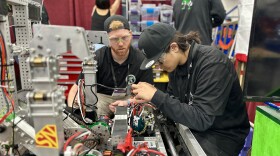The Nuclear Regulatory Commission is launching a pilot study of cancer risks in people living near six U.S. nuclear power plants, including the San Onofre generating station in Southern California.
That plant has been offline since Jan. 31 to repair corroded steam generator tubes.
The $2 million study announced Tuesday will look at multiple types of cancer in populations around plants in California, Connecticut, Illinois, Michigan, New Jersey and Tennessee and near a uranium fuel producer in Tennessee. It also will specifically examine cancers in children living near the facilities.
The study aims to address public concerns about radiation released by the plants. It's expected to begin in the next three months and could pave the way for a future study of all 65 U.S. nuclear plants.
Dr. Loren Mell is a radiation oncologist and researcher at UC San Diego Moores Cancer Center. He said the latency period between exposure and the onset of cancer can take decades. And then there are other variables like genetics.
"For all those reasons, studies like this are hard to conduct well, and they're hard to get firm conclusions from," Mell pointed out. "I mean, otherwise, we wouldn't have a need to sort of redo this study."
A study conducted in 1990 didn't find any health risks associated with living close to nuclear power plants. But recent research in Europe found children living near such facilities have a higher risk of leukemia.







